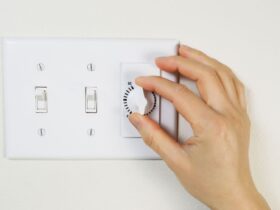Heating your home can be an expensive prospect that forces many homeowners to choose between comfort and economy. For this reason, people devote a great deal of time and resources to trying to find more energy-efficient ways to heat their homes. In the home-heating industry, efficiency refers to the ability of a system to use less fuel to generate more heat. A more efficient furnace will require less fuel overall. Ultimately, it will cost less to run and create less pollution than a less-efficient model.
Of course, it’s not as simple as heading to your local HVAC technician and asking for the highest efficiency furnace possible. Many factors affect the energy efficiency of a heating system, so finding the right one for your home will require a little bit of effort on your part. Here are five tips to help you find the highest-efficiency furnace for your home:
1. Look for the Energy Star Logo
The United States government incentivizes the use of more efficient furnaces. It does this in part through the Energy Star program, which helps homeowners find technology for their homes that uses less electricity or fuel or that helps homeowners reduce their energy consumption in general.
The Energy Star logo can appear on any number of different products. You may see it on the packaging of LED lightbulbs, as they use 70 to 90 percent less electricity than traditional incandescent bulbs. You might see it on energy-efficient refrigerators, which have more effective insulation that allows them to use less electricity overall to keep food cold. The Energy Star logo can even appear on the labels of windows that have been specially designed to reduce air leakage, therefore enabling the home overall to require less energy for heating.
Finding a furnace that has an Energy Star rating means it uses advanced technology that makes it more efficient. Your search for the right furnace should always begin with looking for the Energy Star logo.
2. Also Check the Furnace’s AFUE Rating
Each furnace has an annual fuel utilization efficiency, or AFUE, rating. This rating is between 0 and 100 percent and refers to the furnace’s overall efficiency. The number tells you just how much of the energy that’s put into the furnace comes back as useable heat energy. High-end modern furnaces often use different technological processes to increase this rating, such as by incorporating heat exchangers that can absorb and redirect a portion of the furnace’s waste heat.
The minimum AFUE allowed in modern furnaces is 80 percent, which is considered an extremely low rating. Better furnaces will have AFUE ratings in the mid to high 90s. The higher the AFUE rating, the more efficient the furnace, meaning that over time, it will require less fuel and cost less money to run.
3. Consider Your Local Climate
The best heating systems function organically in their environment. If a furnace isn’t the right one for its particular climate zone, it may struggle and be forced to work extra hard to generate the proper amount of heat. For example, certain advanced HVAC systems such as heat pumps use ambient heat energy from outdoor air as opposed to generating it with a fuel source. This renders them incredibly efficient, as they require a comparatively small amount of power to operate. However, many heat pumps become much less efficient or stop working altogether when the outdoor air is well below freezing. This means a heat pump can be a great heating source in some environments but not in others.
For a climate that drops well below freezing during the winter, propane may be a more efficient choice than a heat pump. Propane burns extremely hot, which helps counter extremely cold temperatures. Finding the highest efficiency furnace possible is a matter of being aware of exactly how cold your local climate gets in winter and knowing what heating methods are best for dealing with it.
4. Consider the Fuel Sources You Have Access To
With the exception of certain particularly advanced heating sources, such as heat pumps, all furnaces need some sort of fuel source to generate heat. It’s true that some fuel sources are more efficient than others, but this efficiency may not necessarily mean they’re right for your home. For example, propane is one of the most efficient heating fuels out there, but if you need to spend thousands of dollars to import it into your area, it may not be the right fuel source for you.
Generally, the easier an energy source is to access, the less efficient it will turn out to be. For example, nearly every home has access to electricity, but electricity is also incredibly inefficient when used to generate heat (via baseboard heaters, for example). You’ll need to do some research to discover what fuels are available in your area and whether there will be added costs to get the fuel to your home.
5. Understand That Efficient Heating Requires More Than Just a Furnace
Even the most highly efficient furnace can’t do its job alone. If the rest of the home isn’t equally up to the task, you won’t benefit from the furnace’s high efficiency. Especially if your furnace is an older and less efficient model, upgrading the insulation in your home will do wonders for your energy bill. Over time, the home’s original insulation can wear out and ducts and windows can develop air leaks. These inefficiencies can allow heated air to escape, forcing your HVAC system to work extra hard to compensate for the losses.
To avoid potential problems, ask an HVAC professional from an experienced company like Entek to inspect your home’s insulation. They’ll check the attic, the windows, the ductwork, and anywhere else where they believe the insulation might be poor. They can then work to address any leaks to boost the overall efficiency of your home’s HVAC system.










